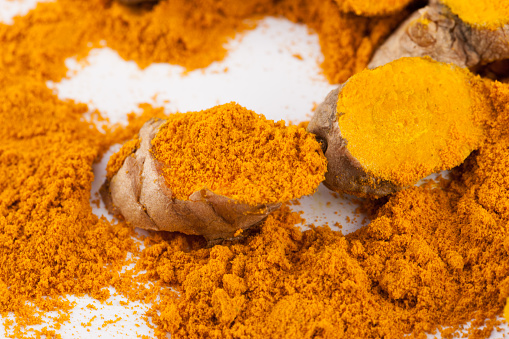
Revamp Your Sex Life
November 28th, 2016Impotence and Erectile Problems Can Be Reversed without Synthetic Drugs
By Dr. Richard Lippman
Dr. A. J. Riley, a specialist in sexual medicine, has reported in the Journal of Clinical Practice that; “52% of men 40 to 70 years old have some degree of erectile inadequacy” (1).
And this percentage becomes higher the older you get. Doctors estimate that more than 85% of men over seventy years of age cannot obtain a firm erection. Yet some eighty-year-olds have erections as firm as those of thirty-five-year-olds (1).
Senior Scientists Doing Research on Erectile Problems
The older male scientists become, the more likely they are to do their own research on male potency. Professor Steven Coles, M.D., Ph.D., of Stanford University has said, “Sexual inadequacy is the most researched and up-to-date area in the medical science field—for obvious reasons” (2).
The deficiencies described below are associated with the majority of impotence or erectile dysfunction cases.
Testosterone: Correcting testosterone to physiologic levels of 700 to 900 mcg/ ml reverses impotence and many other aging problems. Professor Abraham Morgantaler of the Harvard University Medical School has said, “Correcting testosterone to physiologic levels is key to health in older men” (3, 4).
Zinc: Correcting with 50 mg daily of zinc helps men maintain erections (5). Professor Emeritus Denham Harman, M.D., Ph.D., of the University of Nebraska School of Medicine, has said; “90% of the population consume diets deficient in zinc” (5).
Melanotan 2: Correcting daily with Melanotan 2 (MSH2) allows men to achieve spontaneous erections—something that not even Viagra® can do. Dermatology researcher Norman Levine, M.D., has said his patients on Melanotan 2 reported “developing spontaneous erections” (6). By alternating Melatonan 2 doses with a placebo in 10 men diagnosed with ED, he reported that erections were spontaneous, noting, “These men were not looking at erotic video tapes. They weren’t engaging in sexual activity. They were just sitting around and on the placebo, none of them got any erectile activity—zero” (7).
Melanotan 2 Compared with Viagra®
Researchers have found that Melanotan 2 works directly on the brain, where it affects sexual desire as well as physical performance. By comparison, Viagra® and Cialis® appear to have no direct effect on libido. According to Dr. Wessell (7), “With Viagra® the man has to initiate sexual activity or Viagra® won’t work. With this it sort of comes on its own.”
Clearly, Viagra® and Cialis® are not for everyone. Indeed, those little blue or orange pills failed to produce erections for a quarter of the men who tried them. Plus, of course, men on heart medication are forbidden from using them (8).
On the other hand, Melanotan 2 does not appear to affect blood pressure, although, the US Food and Drug Administration advise those with hypertension and taking MSH2 to proceed with caution.
Development of an Easier Method of Consuming Melanotan 2
Melanotan 2 is now available as a liquid in a nasal spray called MSH2-Pro™ it can help men achieve spontaneous erections. It also helps to darken skin, even without exposing skin to the melanoma-causing sun.
After studying endocrinology for decades, I have found that MSH2-Pro™ does more than improve erections and tan the skin. Indeed, it is essential for firming the skin and toning the muscles (see figure 1).
MSH-2 is an anabolic hormone; it works in synergy with other anabolic hormones in the body such as DHEA, estradiol, testoerstone, IGF-1 (10) and growth hormone. When working together, they tighten the skin and muscles, especially in younger people who have higher levels. People over 50 often see deficiencies in these anabolic hormones, which is why skin starts to pale, sag and shrink.
Interestingly, African Americans in their senior years also begin to pale and will often eventually appear as white as Caucasians. I have interviewed African Americans on this point and they all confirm that their grandparents are considerably lighter skinned now than they were in their youth.
According to Dr. Thierry Hertoghe of the Hertoghe School of Medicine in Brussels, Belgium, anabolic deficiencies contribute to nearly a one-third loss of muscle strength between the ages of fifty and seventy (10).
The name of this condition is Sarcopenia and the loss of muscle strength adversely impacts the body by limiting motion and balance. People with Sarcopenia are at increased risk of falls. On average, half of men at age 70+ have such weak muscles that they cannot rise from an armchair without using their arms to propel themselves forward. An exception is shown in figure 2. Men of this age (and some younger) may also develop skin folds on the back that look almost like draperies – this is another result of declining anabolic hormone levels, especially MSH-2 (10) and GH.
As you can see, anabolic hormones have to act together – if they become unbalanced, the body starts to experience decline in various areas. With balance, it is more likely to retain youthful skin and muscles. The firm skin and toned muscles of athletes is testament to this (see figure 3).
A Professor Speaks Out about Skin and Skin Cancer
On the subject of improved skin, it may be instructive to hear the thoughts of a professor of medicine. Oncologist Derry Ridgway M.D., JD, is a professor of medicine at the University of California. In a private interview, I asked him how it was possible that humans could have run naked on the savannas of Africa for over 100,000 years without acquiring skin cancer.
Professor Ridgway said; “Many millennia ago, before humans migrated out of Africa, they had very black skin rich in melanocytes, (pigment-producing skin cells). This dark skin protected them from the sun’s cancerous ultraviolet radiation. In fact, today’s medical literature states that incidence of melanoma and squamous cell carcinomas are thirty times greater in light-skinned people versus dark-skinned people. Furthermore, when albinos are born in Africa today, they are totally pale and lacking in melanocytes and they easily acquire skin cancers when exposed to the powerful African sun.”
“Many thanks, Professor Ridgway, for your wise and definitive statement,” I said. “Allow me to add that the natural hormone MSH-2 stimulates our melanocytes to darken our skin. This darkening will improve our appearance, help prevent skin cancers, and help men to achieve spontaneous erections! In addition, MSH-2 has other vital functions to promote superior health such as reduced skin laxity.” (10, 13)
Improving Skin and Muscle Health
In a subsequent interview with prominent dermatologist W. Wong, MD, PhD, formerly with Baylor University in Houston, Texas, I confirmed the details of Professor Ridgway’s interview. Dr. Wong agreed that none of her darker-skinned patients acquired skin cancer (11). She added that, ironically, darkly pigmented skin shields the deep dermal layers of the skin from producing vitamin D3, which is both the critical vitamin and hormone for avoiding twenty-six other forms of cancer (10). Both vitamin D3 and MSH-2 significantly impact health when used together.
I knew from the medical literature that both light and dark-skinned people require blood levels of 50 to 80 ng/ml of D3 for preventative health (12). D3 also controls optimal levels of calcium and phosphate in the blood. Unfortunately, many people over the age of fifty do not convert ordinary vitamin D to its active form, D3 (D3 5000™ and D3-Pro™). Thus, many seniors consuming fish or ordinary, over-the-counter vitamin D do not receive the benefits of optimal blood levels of D3 (10).
Similarly, vitamin B12 is absorbed poorly in the GI tract of people over the age of fifty.
Dr. Wong also suggested that retinol cream would further boost skin health. In her busy practice, Dr. Wong uses a prescription-based, high-dose retinol cream (Retin-A®). It is extremely effective in eliminating mild wrinkles or fine lines in the face and neck. However, if you have crow’s feet on the sides of your eyes, I recommend, instead, Aldo-Spray™ applied topically to this periorbital area around the eyes because your hypothalamus is probably not producing sufficient aldosterone (10). AldoSpray™ should be applied to these fine lines and cleared up within approximately two months.
I strongly recommend these creams and gels for any sensible antiaging or antiwrinkling program. I also strongly suggest MSH2-Pro™ for youthful, firm and spontaneous erections.
In addition, you will rapidly achieve antiaging benefits including measurable reductions in the appearance of fine lines and wrinkles, reduced skin laxity, reductions in both tactile and visual skin roughness, increased skin clarity, reduced pore size, increased ability to tan and reduced sensitivity to damaging sun rays as confirmed by thirty weeks of clinical studies (13).
References
- Riley, AJ, 1994, British Journal of Clinical Practice, 48(3), pp. 133-136.
- Coles, S, 2013, private communication.
- Morgentaler, A, 2012, private communication.
- Morgentaler, A, 2009, Testosterone for Life, Recharge your vitality, sex drive, muscle mass, and overall health, McGraw Hill, NY, NY.
- Thottam, PJ, April 2005, Modernizing Ayurveda, Sura Books Ltd., Anna Nuyar, Chanute, pp. 150.
- Levine, N, Aug. 2, 2002, Viagra’s New Rival Slims and Tans, too, NY Post, NY.
- Wessell, H, 2000, J Impotence Research, 12, Suppl 4, S74-S79.
- viagra.com
- wikipedia.com
- Hertoghe, T, 2011, private communication.
- Wong, W. 2014, private communication.
- See further articles on the IAS website about aldosterone.
- Figueiredo, V, Jan/Feb 2014, Prime Intn J Aesthetic and Anti-Aging Med, Vol 2, Issue 1, Chemical Peels for Wrinkle Reduction and Photoaging, 18-27.








